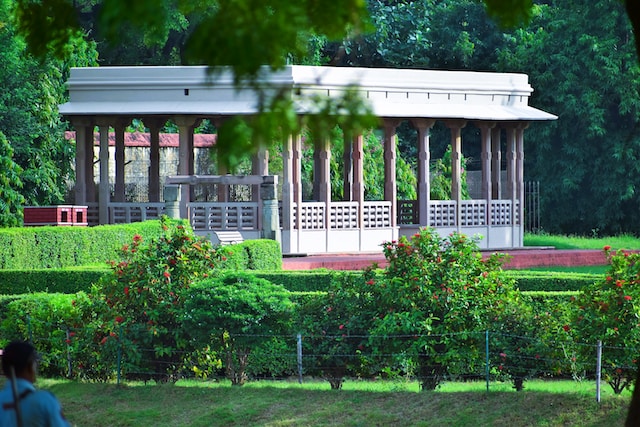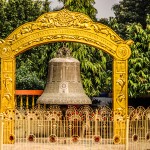Nestled within the timeless beauty of Varanasi lies a place of profound spiritual significance - Sarnath. This hallowed destination, just a stone's throw away from the heart of Varanasi, beckons travelers with its enchanting allure. Sarnath is, without a doubt, one of the four paramount pilgrimage sites for Buddhists across the globe. Its historical importance is etched in stone, as it is here that the Buddha delivered his inaugural sermon. Any visit to Varanasi remains incomplete without a pilgrimage to this sacred site.Delving into the Essence of Sarnath

Sarnath isn't merely a place; it's a spiritual sanctuary, framed by lush green fields and tranquil ponds. The deer park, a serene oasis within Sarnath, allures visitors, especially during the evening, when the landscape is bathed in a warm orange glow and the majestic deer cast graceful silhouettes.
The name 'Sarnath' finds its roots in "Sarangnath," the Deer God. As one of Buddhism's holiest pilgrimage destinations, this is where Lord Buddha himself trod. Also known as Isipatana, Sarnath holds the distinction of being the site where Buddha preached the "Dhammacakkappavattana Sutta." It's a place that resonates with peace and promises a profound journey through India's rich historical tapestry.
Sarnath's Archaeological Tapestry
Sarnath isn't just a spiritual haven; it's also an archaeological treasure trove. At its heart stands a majestic Stupa, erected in 249 BC immediately after the Buddha's passing. The Ashoka Pillar, crafted in the 3rd century BC, and the scattered remains of various dynasties throughout the site invite exploration into the architectural legacy of this hallowed place.

Unraveling Sarnath's History
Sarnath is known by many names - Mrigadava, Migadya, Rishipattana, and Isipatana, each bearing a profound spiritual significance. It's believed to be where Gautama Buddha imparted his first sermon, illuminating the profound wisdom of the Four Noble Truths and the Eightfold Path. To disseminate his teachings on enlightenment and nirvana, Buddha's journey led him to Sarnath, with the deer park serving as the sacred stage for his inaugural sermon.
In the tumultuous pages of history, Sarnath faced the ravages of multiple Muslim invasions between the 10th and 12th centuries. It receded from the annals of India's cultural heritage. However, in the 19th century, a dedicated group of British archaeologists recognized Sarnath's historical value, resurrecting it as a vital Buddhist pilgrimage site.
Emperor Ashoka, a proponent of Buddha's dharma, adorned this sacred land with stupas and monasteries. The third-century BC Ashoka Pillar, crowned by four lions, now on display in the museum, stands as an emblem of this era. Sarnath saw a flourishing of Buddhist temples and monuments between the 3rd and 11th centuries BC, attesting to the zenith of Buddhism's popularity.
Embark on a journey through Sarnath, where history, spirituality, and archaeology intertwine to create a tapestry of profound significance. This sacred haven in Varanasi invites all seekers of truth and history to its timeless embrace.











